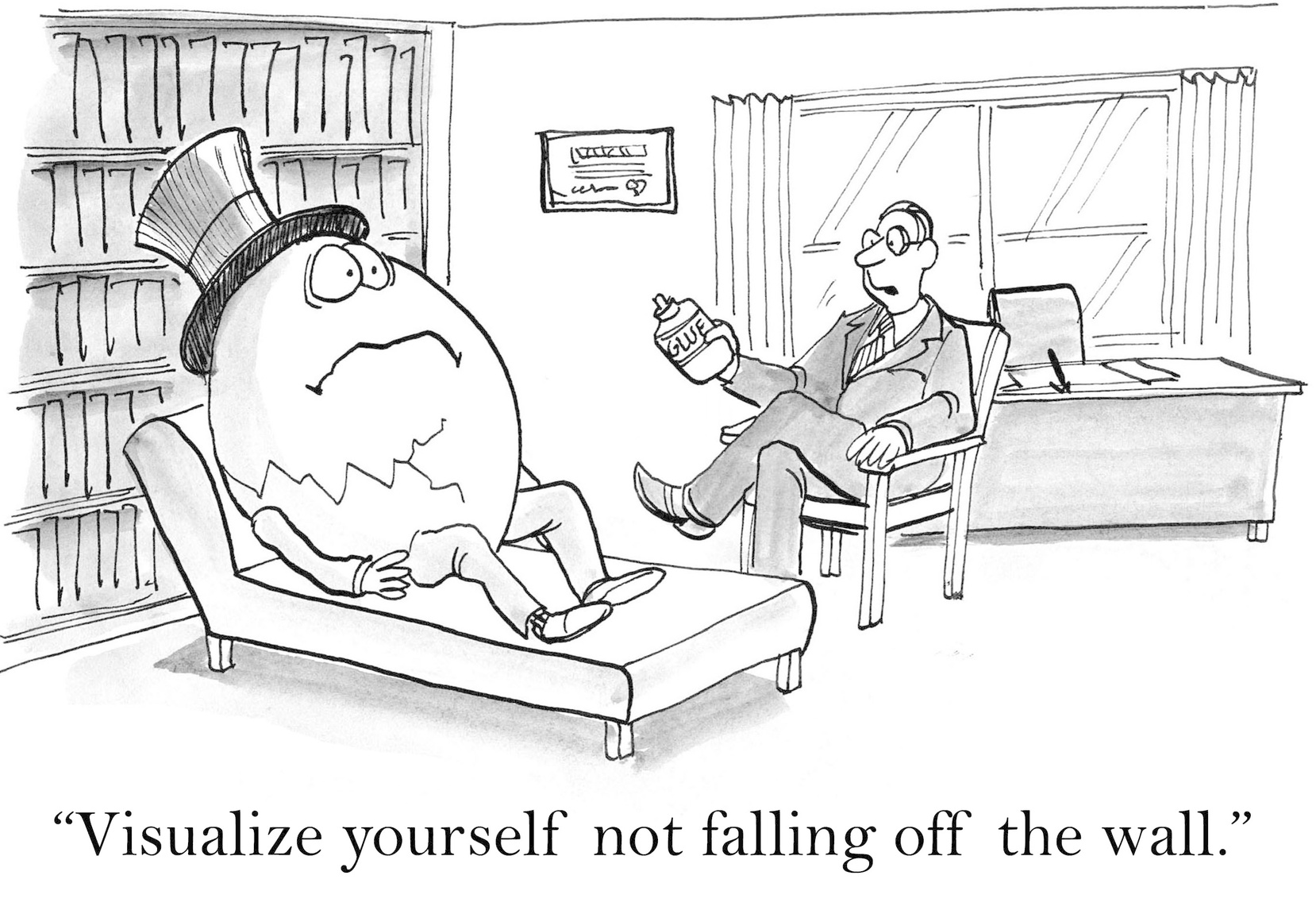 The stories we tell ourselves influence how we act and feel. Our stories can be self limiting because they prevent us from seeing and realizing our true potential. When we change our stories by incorporating language about our strengths we can knock down those self-limiting beliefs.
The stories we tell ourselves influence how we act and feel. Our stories can be self limiting because they prevent us from seeing and realizing our true potential. When we change our stories by incorporating language about our strengths we can knock down those self-limiting beliefs.
What do I mean by the stories we tell ourselves? It’s the script that plays in our head without realizing it.
You wake up in the morning, look in the mirror and see bags under your eyes. You play the script “I’m getting old. I didn’t used to have bags under my eyes. I don’t know if there’s enough makeup in the world to cover this up.”
Later in the day, when someone says you look pretty, you look at them as if they’ve lost their mind. You filter their compliment through your script.
“Are you serious? Did you see the bags under my eyes?”
“Actually, no. Never saw the bags. Only saw you looking pretty.”
We tell ourselves a story about why we didn’t get the promotion, why we got a bad grade, why we’re not good enough and on and on and on.
How do we change these stories?
Knowing and understanding the language of our individual strengths gives us new language to describe ourselves. It knocks down the self-limiting beliefs so that we see ourselves in a new, positive light and gain the confidence to tell ourselves a positive story. Imagine if the script you played in your head everyday was positive.
There are three steps to learn your strength’s language and incorporate it into your stories.
Step One: Name Your Strengths
First, you must discover your strengths. Here are four ways to help identify your strengths.
1. Pay attention to the things you think are problems. The things you think are problems may actually be clues to your strengths.
I used to moan to myself “I’m not good at anything. All I have to show for my life is that I love my family” – as if that wasn’t good enough. Then, I discovered that Love is a character strength of mine. I learned that not only is loving good enough, it’s a strength. This gave me permission to see myself in a different way – to tell myself a different story.
Maybe you say you’re a blabbermouth. This could be a cue that Communication is a strength of yours. Instead of saying you’re a blabbermouth, you could say “I love to express myself with words. I’m a strong communicator.” Maybe, like a friend of mine, you have been criticized for always being analytical. Yet, this is her strength – she is logical and objective in her approach.
2. Pay attention to why people come to you. This is another clue to your strengths.
I know someone that’s always asked for her creative ideas for office parties. This is something her coworkers value, and she loves it – a true indication of a strength. What do others ask you for at work? What do they ask you for at home? What about in your volunteer community? Do people look to you to be in charge of a meeting because you are comfortable in this role and make decisions easily? This could be your strength of Command. Do people ask you to coordinate all the volunteers for a function? You might have the strength of Arranger.
3. Pay attention to the positive feedback you receive from others. What words are used when you receive a compliment?
Do you receive compliments for being a hard worker and getting a lot done? Maybe you have the strength of Achiever. Are you complimented for your perseverance in reaching your goals? You may have the strength of Focus. Do people compliment you for putting systems and procedures into place? You may have the strength of Consistency. Do you receive compliments for being appreciative? You may have the character strength of Gratitude.
4. Pay attention to those times when you are completely absorbed in an activity and don’t notice time passing.
After many hours, you still love what you are doing and you feel energized. In psychology, this is referred to as being in a state of Flow or in your Zone. This usually happens when our strengths are engaged and we’re doing something we love. What were you doing when you were in your Zone? What did you love about it? Did you love that you worked really hard toward a goal? Did you love being a resource to others? Were you excited because you spent time brainstorming, coming up with new ideas? Did you love being in the spotlight? Your answers name your strengths.
Step Two: Claim Your Strengths
Once you have identified your strengths, start to notice the impact of your strengths on others and on yourself. What words do others use to describe you? How would you describe yourself when you’re using your strengths? Begin to use these words to describe yourself and to change your self talk.
- Notice when you use your strengths. Using strengths, or our natural talents, is…well, natural. So, we don’t always notice when our strengths are in play. Make an attempt to notice when you are using your strengths. If you like to write, jot down a note when you spot your strengths in action. Use whatever method works for you to spot and record your strengths. Note how you feel when use your strengths. Typically, you will find that when your strengths are in motion, you feel good, energized, happy, and on top of the world. Use these notes as a reference when you’re looking for new words to describe yourself…to a boss, in a resume, in a performance review, in a presentation, and, especially when you’re changing the story you tell yourself.
- Notice your results from using your strengths. Acknowledge your accomplishments. As I mentioned, using strengths is natural for us. Our work often comes easier to us when we use our strengths. Just because it feels natural and easy, doesn’t mean our accomplishments are any less significant. Start noticing and taking credit for your accomplishments, even, or especially, if they feel easy and fun. You may find you’re proud of yourself. Own that feeling of accomplishment. Using your strengths is fun!
Step Three: Aim Your Strengths
Find ways to put your strengths into action. I mentioned above that strengths are natural talents. To truly shine, we must exercise these talents. We must develop them just like we develop muscle. By putting your strengths into action, you become even stronger.
- Volunteer for projects where you get to use your strengths. This allows you to develop your strength muscles and have fun.
- Identify how you can approach your current work from a strengths perspective. For example, you have the strength of Harmony. You are working on a team project and the team is getting frustrated because it doesn’t understand its purpose. Engage your strength of Harmony by helping the team to find common ground, finding areas upon which everyone can agree. You will focus the team through your strength.
- Start to describe yourself with your new strengths language. As you become more comfortable with understanding your strengths, you start to own who you are. You gain confidence in yourself and are more bold in your descriptions of yourself.
You will see yourself in a new light and you will change the stories you tell yourself.
How has the discovery of your strengths helped you to change the stories you tell yourself?







